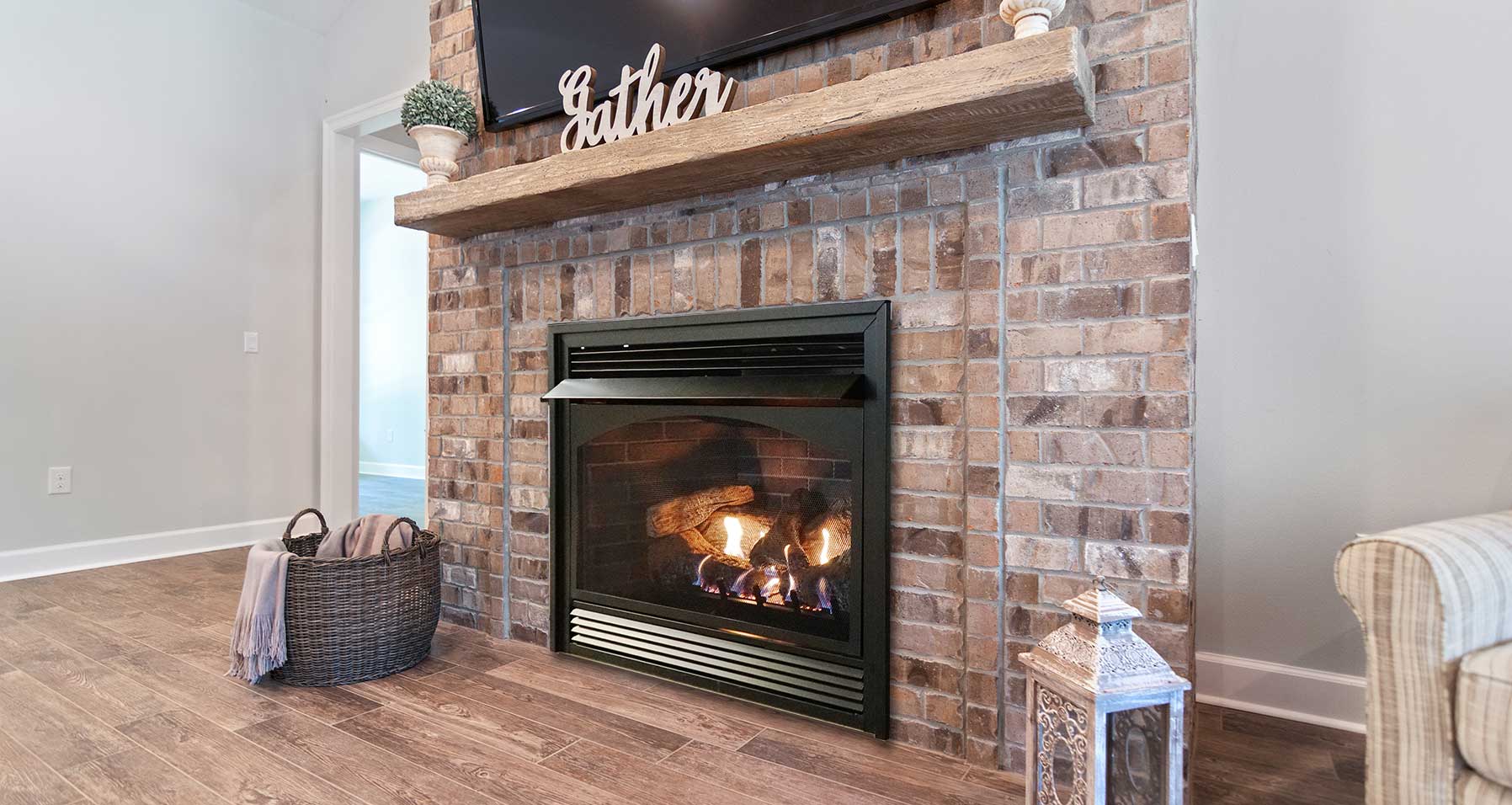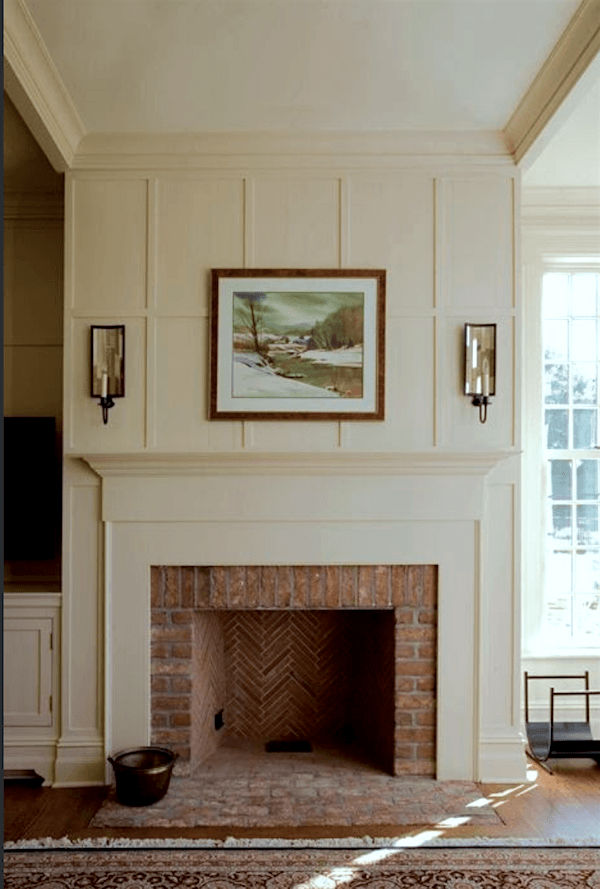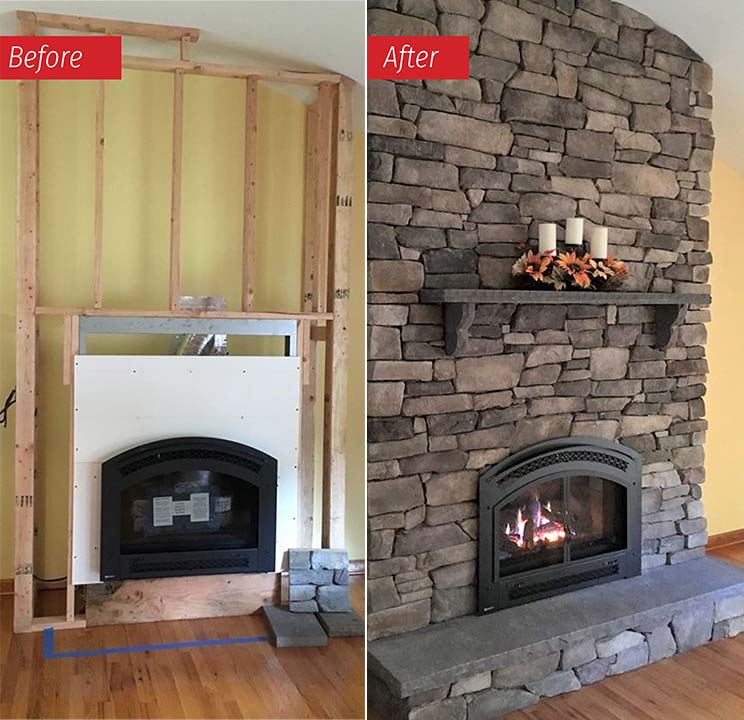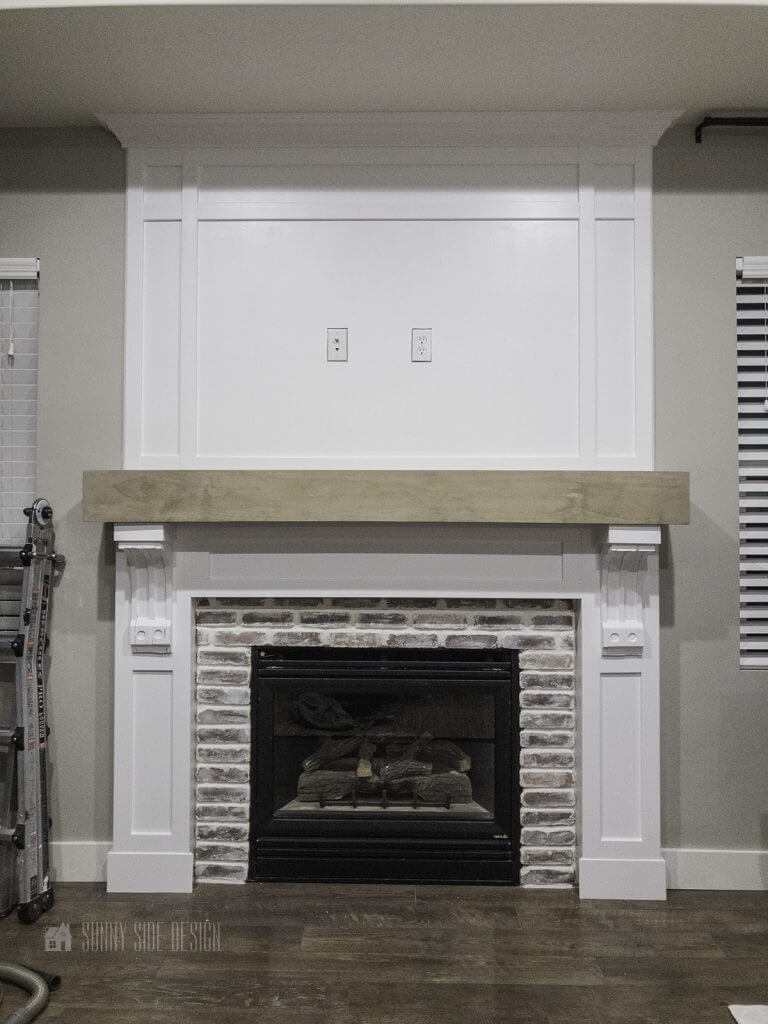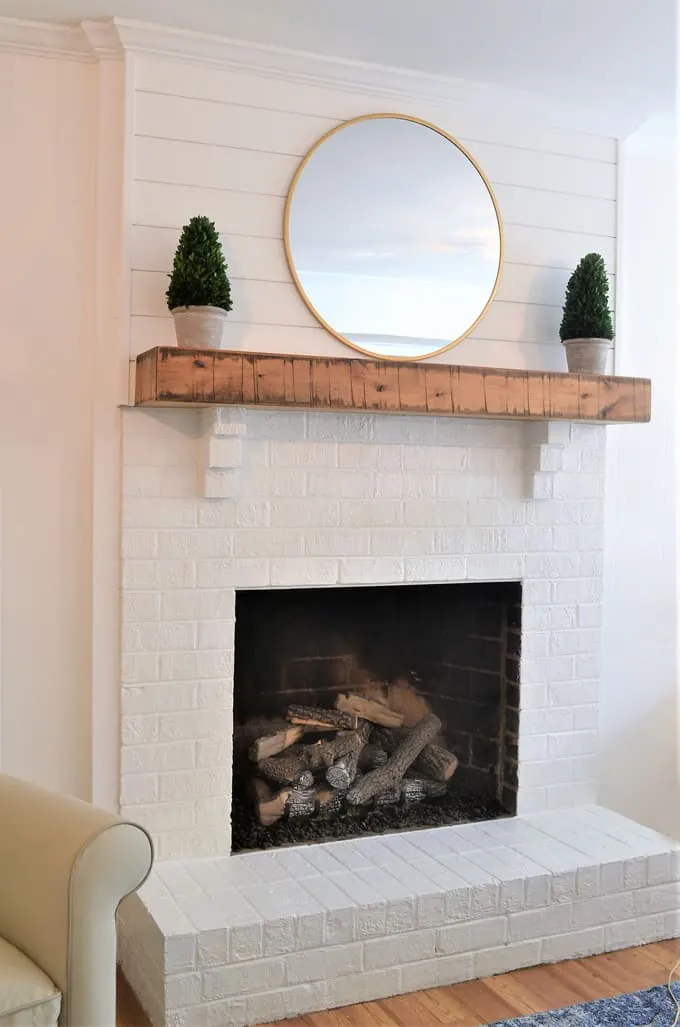The Classic Appeal of Brick Surrounds for Gas Fireplaces
Gas fireplace brick surrounds create a timeless aesthetic that blends traditional charm with modern convenience. Exposed brick adds texture and warmth to the fireplace’s appearance, complementing both rustic and contemporary interiors. The natural variations in brick coloring and mortar lines provide visual interest that manufactured materials often lack. Brick’s thermal mass helps radiate heat efficiently after the fireplace turns off. Many homeowners appreciate how brick surrounds conceal the mechanical components of gas units while maintaining an authentic fireplace look. The material’s durability ensures the surround withstands years of use without showing wear. This combination of beauty and practicality makes brick a perennial favorite for gas fireplace installations.
Design Options for Brick Surrounds
Brick fireplace surrounds offer numerous design possibilities to suit different styles. Traditional running bond patterns create a classic look, while herringbone or basketweave layouts add decorative flair. Homeowners can choose from various brick types – smooth red clay for cottage charm, tumbled bricks for rustic appeal, or sleek white bricks for modern spaces. Mortar color significantly impacts the final appearance, with white mortar brightening the look and dark mortar creating dramatic contrast. Some designs incorporate brick arches or soldier course detailing above the firebox. For contemporary settings, stacked brick without visible mortar lines delivers a clean, minimalist aesthetic. These options allow customization to match any interior design scheme.
Installation Considerations for Gas Units
Proper installation ensures brick surrounds work safely with gas fireplaces. Builders must maintain required clearances between brickwork and gas fireplace inserts, typically 6-12 inches depending on the model. Non-combustible materials like metal studs or cement board provide necessary backing behind brick veneers. Expansion joints accommodate brick’s natural movement and prevent cracking near heat sources. Professionals often install a metal lintel above the firebox opening to support the brickwork. Ventilation gaps at the base prevent heat buildup behind the surround. These technical considerations guarantee both safety and long-term durability for the brick installation.
Maintenance and Cleaning Tips
Brick surrounds require specific care to maintain their appearance with gas fireplaces. Regular dusting with a soft brush removes surface particles from the porous material. Annual cleaning with a mild detergent solution prevents soot buildup in the mortar joints. Sealing the brick every few years protects against moisture absorption and staining. Immediately wipe up any condensation or water spills to prevent efflorescence. Check mortar joints annually for cracks that may need repointing. Avoid harsh chemical cleaners that could damage the brick’s surface or discolor the mortar. With proper maintenance, a brick surround develops a beautiful patina while continuing to enhance the gas fireplace’s aesthetic appeal.
Complementing the Brick Surround Design
Thoughtful design choices enhance brick surrounds for gas fireplaces. Wood mantels create warm contrast against the brick’s texture, while metal mantels offer industrial appeal. Recessed lighting or sconces highlight the brick’s dimensional qualities. Extending the brickwork to the ceiling makes a dramatic statement in rooms with high walls. Contrasting hearth materials like slate or limestone anchor the design visually. Some homeowners continue the brick treatment to adjacent walls or columns for a cohesive look. These complementary elements elevate the brick surround from functional necessity to intentional design feature that celebrates the gas fireplace’s visual warmth.
Images about Gas Fireplace Brick Surround
Gas Fireplace Brick Surround
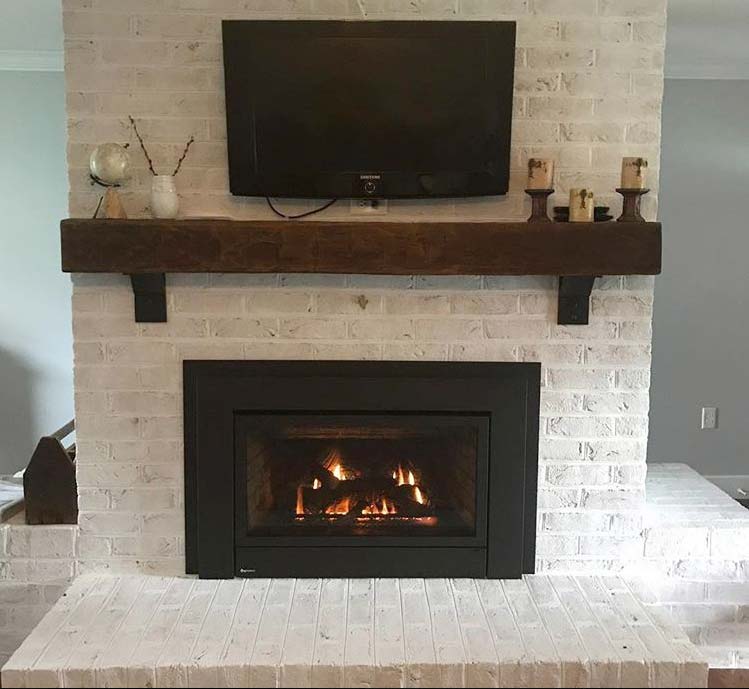
White Mountain Hearth –
Gas Brick Fireplace
Remodel Ideas: Mantels, Inserts, and Brick
Fireplace Mantel Surround Brick Veneer Sunny Side Design
How to Build a DIY Brick Fireplace Hearth with a Shiplap Accent
Our Ugly Brick Fireplace – He Vetoes Painting It! – Laurel Home
10 Fireplace Makeover Ideas Before and After Regency
gas fireplace with brick surround. Brick fireplace, Brick
Fireplace Mantel Surround Brick Veneer Sunny Side Design
Gas Fireplace Surround Ideas
Red brick fireplace makeover ideas
Related Posts:
- Gas Fireplace Surround Ideas
- Fireplace Surrounds Design Ideas
- Fireplace Surround Ideas
- DIY Stainless Steel Fireplace Surround
- Modern Concrete Fireplace Surrounds
- Fibreglass Fireplace Surround
- Walnut Fireplace Surround
- Fireplace Surround Replacement
- Thin Brick Fireplace Surrounds
- Cherry Fireplace Surround
Gas fireplaces have become increasingly popular in recent years for their convenience, efficiency, and ability to provide a cozy ambiance to any room. One key aspect of a gas fireplace is the brick surround, which not only adds aesthetic appeal but also serves as a protective barrier around the firebox.
Choosing the right type of brick for your gas fireplace surround is essential to ensure both safety and style. Common options include traditional red bricks, which offer a classic look, or more modern options such as white or black bricks for a contemporary touch. It’s important to select bricks that are heat-resistant and suitable for use near a fireplace.
Installing a gas fireplace brick surround requires careful planning and precise measurements to ensure a proper fit. It’s recommended to hire a professional contractor experienced in fireplace installations to ensure the job is done correctly and safely. The brick surround should be securely attached to the wall surrounding the fireplace, with proper insulation to prevent heat transfer to adjacent walls or structures.
Maintaining a gas fireplace brick surround is relatively easy, requiring regular cleaning with a soft brush or vacuum to remove dust and debris. Avoid using harsh cleaning chemicals or abrasive materials that could damage the bricks or mortar. Periodically inspect the surround for any signs of wear or damage, such as cracks or loose bricks, and address any issues promptly to prevent further damage.
Enhancing the appearance of your gas fireplace brick surround can be achieved through various decorative touches, such as adding a mantel shelf, installing accent lighting, or incorporating decorative tiles or trim pieces. These elements can complement the overall design scheme of your space and create a polished look for your fireplace area.
Common Mistakes to Avoid:
1. Using non-heat resistant bricks for the surround, which can pose a safety hazard.
2. Neglecting proper insulation around the fireplace surround, leading to heat transfer issues.
3. Failing to hire a professional contractor for installation, risking improper fit or safety concerns.
4. Using abrasive cleaning materials that can damage the bricks or mortar over time.
What are some advantages of having a gas fireplace with a brick surround?
– Gas fireplaces with brick surrounds offer convenience, efficiency, and aesthetic appeal, providing a cozy ambiance to any room.
How do I choose the right type of bricks for my gas fireplace surround?
– Consider options such as traditional red bricks for a classic look or modern white or black bricks for a contemporary touch, ensuring they are heat-resistant for safety.
Can I install a gas fireplace brick surround myself?
– While it’s possible to do so, it’s recommended to hire a professional contractor experienced in fireplace installations to ensure safety and proper fit.
How do I maintain my gas fireplace brick surround?
– Regularly clean with a soft brush or vacuum, avoid harsh chemicals, inspect for wear or damage, and consider enhancing with decorative elements for added style.
What are some common mistakes to avoid when dealing with gas fireplace brick surrounds?
– Avoid using non-heat resistant bricks, neglecting insulation, skipping professional installation, and using abrasive cleaning materials that can damage the bricks over time.
Are there any regulations or codes to consider when installing a gas fireplace brick surround in my home?
Yes, there are several regulations and codes to consider when installing a gas fireplace brick surround in your home.
- Building Codes: Check with your local building department to ensure that your gas fireplace installation meets all building codes and regulations in your area.
- Ventilation Requirements: Gas fireplaces require proper ventilation to prevent carbon monoxide build-up. Make sure that the surrounding brick surround allows for adequate airflow around the fireplace.
- Clearances: Gas fireplaces must have specific clearances from combustible materials, including the brick surround. Make sure that the brick surround is installed at a safe distance from the fireplace to prevent fire hazards.
- Gas Line Installation: The gas line supplying the fireplace must be installed by a licensed professional and meet all safety standards.
- Manufacturer’s Guidelines: Follow the manufacturer’s guidelines for installing the gas fireplace and brick surround to ensure safe operation and prevent damage to the unit.
By following these regulations and codes, you can ensure that your gas fireplace brick surround is installed safely and compliant with all relevant standards.
Can I change the color of my existing brick surround without completely replacing it?
Yes, you can change the color of your existing brick surround without completely replacing it. One option is to paint the brick with a special masonry paint that is designed to adhere to brick surfaces. Another option is to use a technique called limewashing, which involves applying a mixture of lime, water, and pigment to the surface of the brick. Both of these methods can give your brick surround a new look without the cost and hassle of completely replacing it.
